If you understand the tooth decay process as explained in the previous blog, then you’ll know that the damage can be reversed. Not all decay on your teeth need to be filled. How does this work? The logical thinking would be to remove the causes and enhance the natural repair of your teeth. i.e. tipping the damage/repair scale.
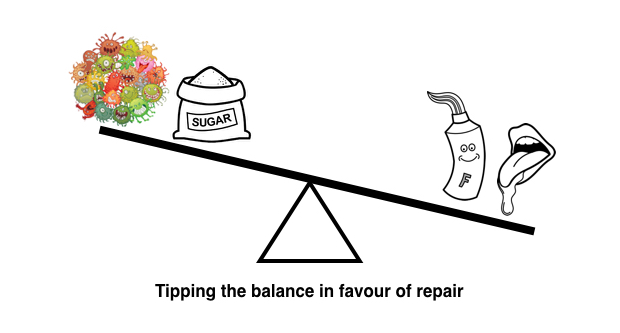
Let’s look at the first part of the equation, starting with the repair of you teeth.
Saliva
As explained in the previous blog, saliva has a protective role by washing away acid and restore teeth with minerals. Therefore people who have little saliva or “dry mouth” tend to have more tooth decay in the mouth. This is quite common with older patients who are on multiple medications or occasionally, patients who underwent cancer radiation therapy around the head and neck area. Vice versa, people who have a lot of saliva will have more protection for their teeth and here’re a few things we can do to stimulate saliva flow during the day.
- Snack on non-sugary food such carrot, celery, fruits etc.
- Chew on sugar free chewing gum.
- Or even better, chew on a special chewing gum called “Recaldent”, although it’s not widely available in Australia.
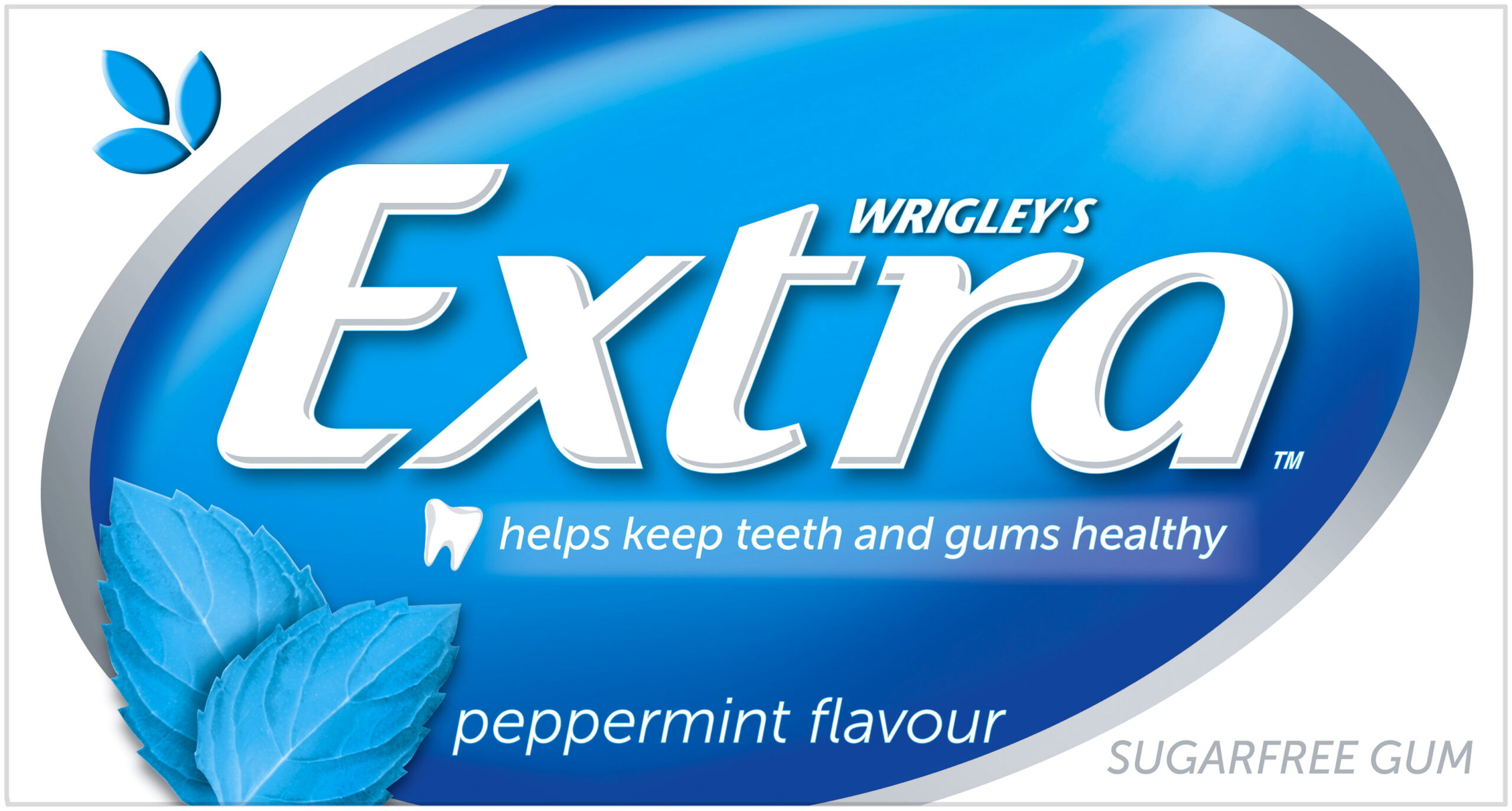
Sugarfree chewing gum

Healthy snacks
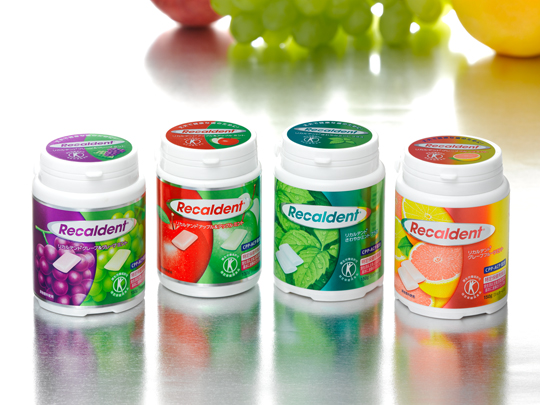
Recaldent

Healthy snacks
Fluoride
Teeth undergo constant states of damage and repair daily. When fluoride is available in the mouth, this mineral gets incorporated into the teeth enamel which make them more resistant to acid attack. On a Stephan curve, this is how teeth with fluoride compared with normal teeth.
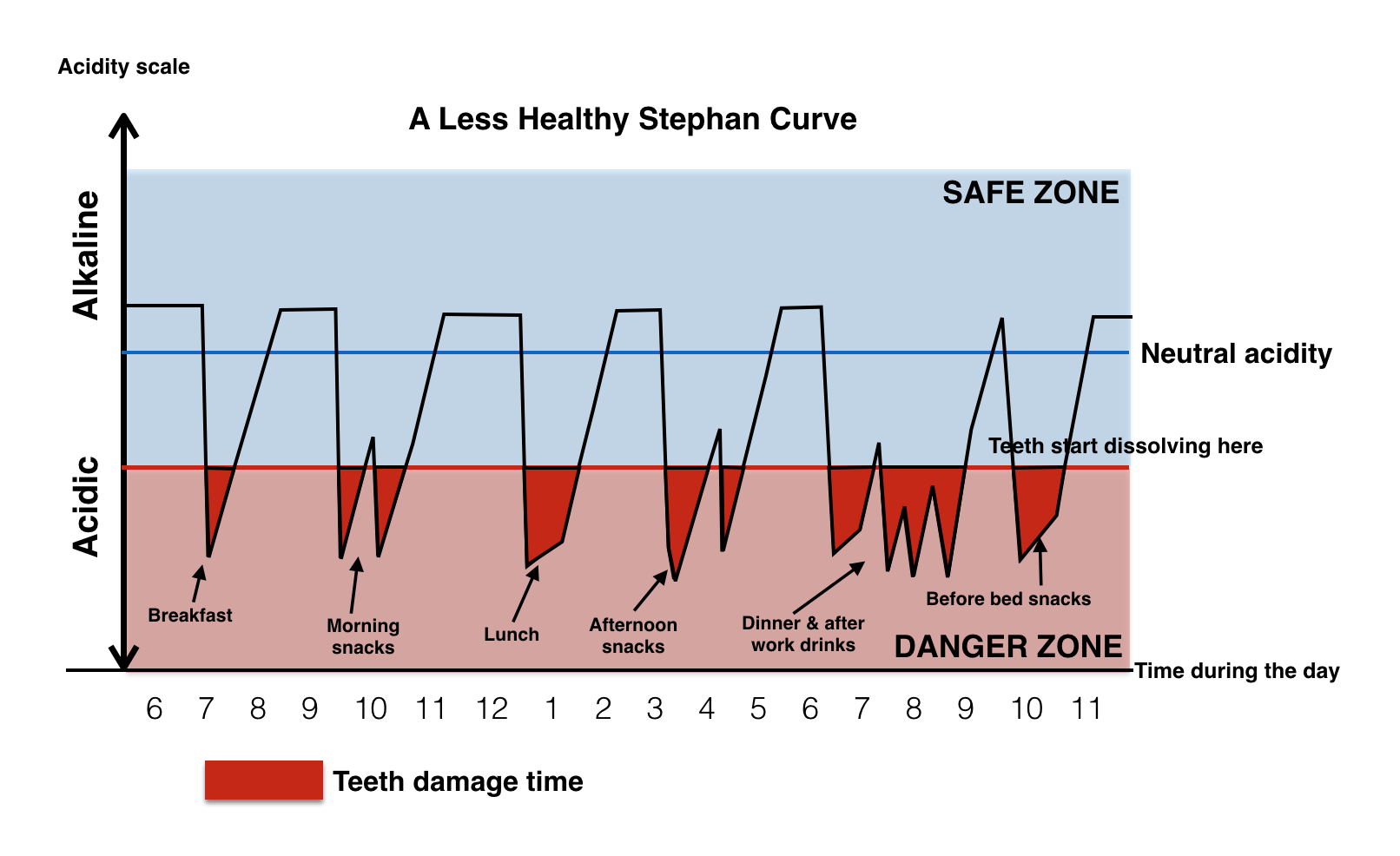
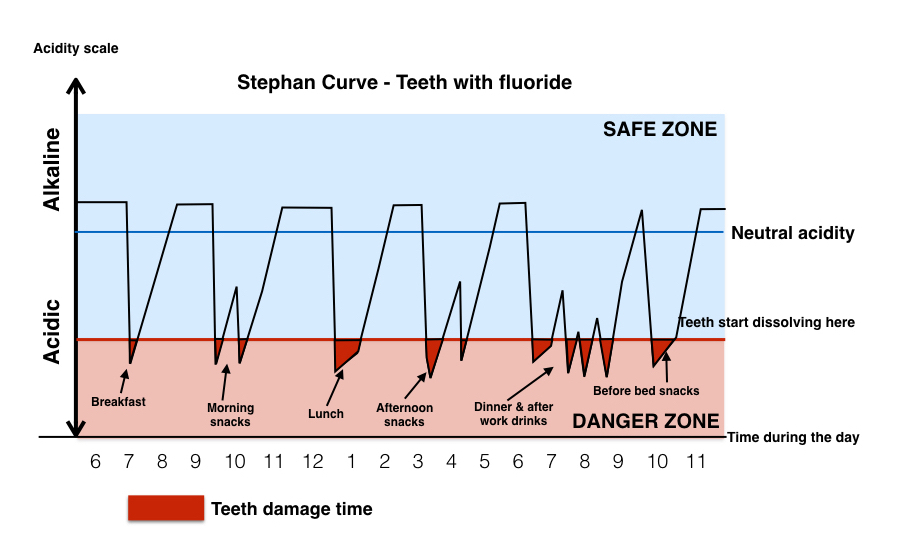
There’re a few ways to keep up fluoride in your mouth.
1) Drink tap water.
Most places in Australia, the water supply is fluoridated with 1 part per million (ppm) fluoride. So drink up!! It’s free and it’s good for your teeth. Keep in mind that not all states or towns do water fluoridation so check on your council website.
2) Fluoride toothpaste.
Most of the toothpastes commercially available today have 1000ppm of fluoride. You almost have to go out of your way to look for no-fluoride toothpaste. The tip would be to brush your teeth with fluoride toothpaste, spit but DO NOT rinse. This way, you’ll leave more fluoride around teeth after brushing.
3) High concentration fluoride toothpaste.
If your dentist mentioned that you’re someone with high risk of getting dental decay, it may be worthwhile to use high concentration toothpaste which has 5 times the amount of fluoride as normal adult toothpaste. It’s called “Neutrafluor 5000” and you can find them at the chemist. (Check out more information about toothpaste here)
4) Fluoride application at the dentist.
High concentration fluoride paste in the dental office is strictly for professional use. After whole mouth cleaning, dentists usually apply this fluoride paste. There’s no better time because fluoride is best applied on the clean tooth surface.
5) Tooth mousse plus.
This is a newer product which have fluoride as well as calcium and phosphate. It’s the only product currently in the market that strengthens your teeth as well as repairing damaged surface. The mousse can be used to apply daily at night time.

Fluoridated Tap Water
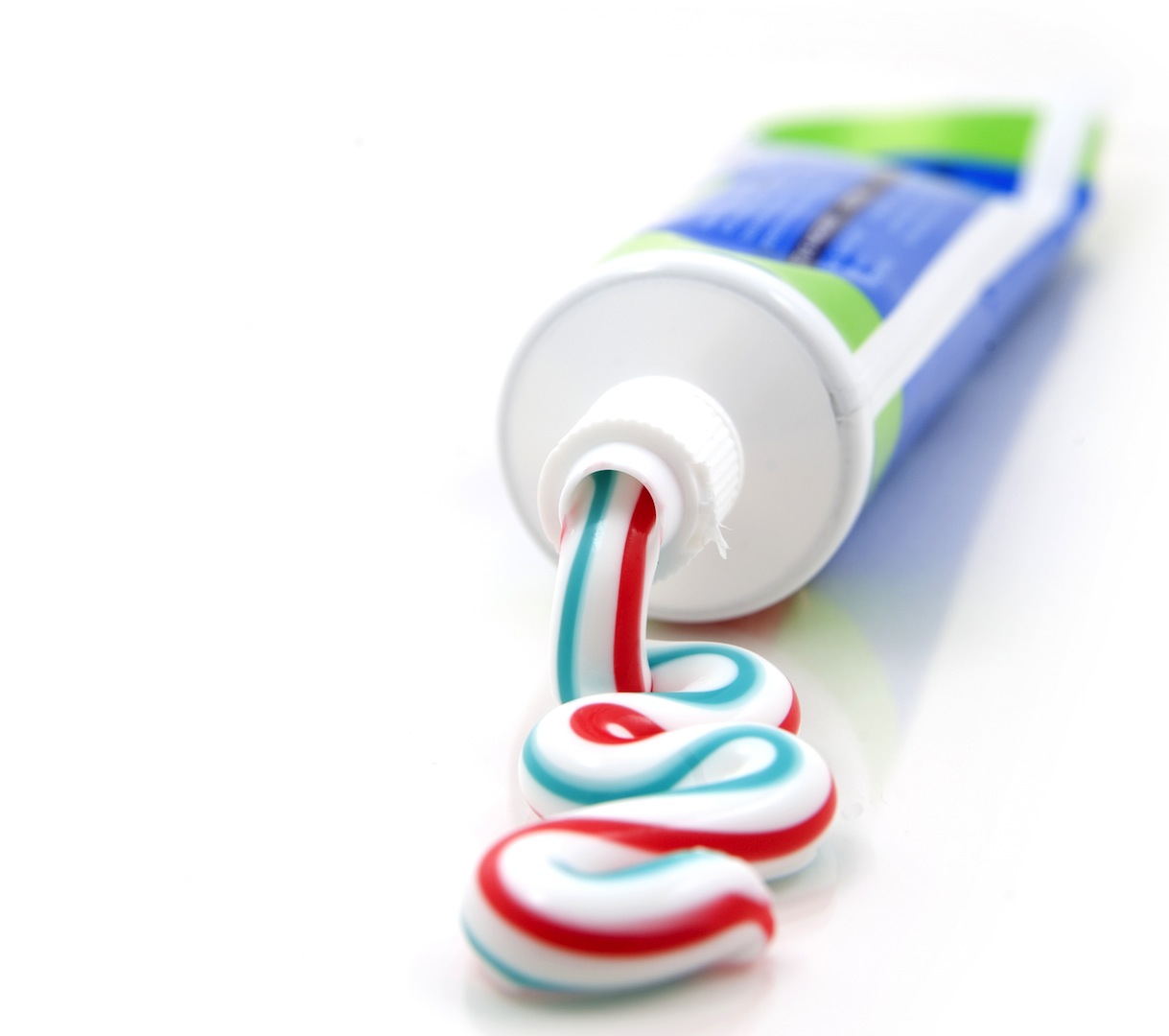
Fluoride Toothpaste
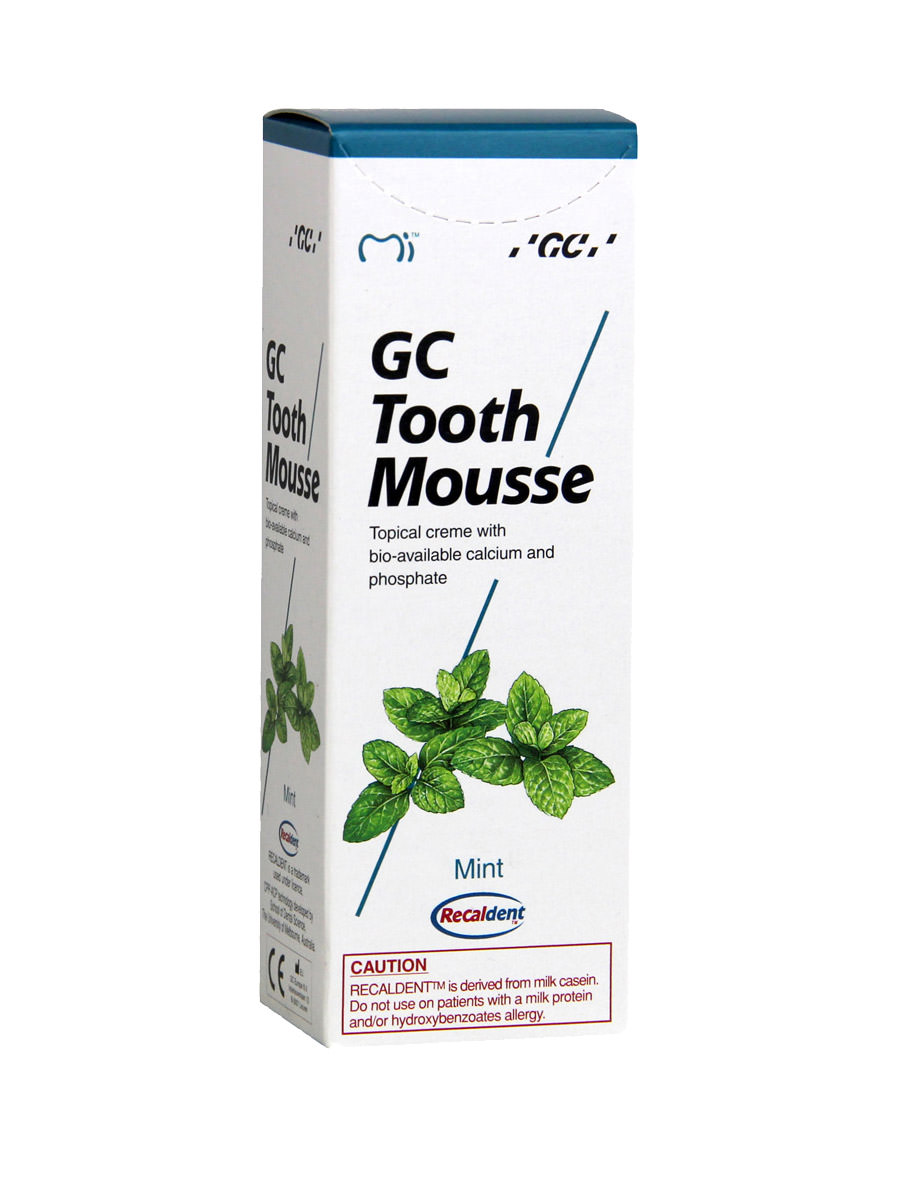
Toothmousse Plus
To your healthy smile.
Dr. Supa
Supa Dental, Melton.



